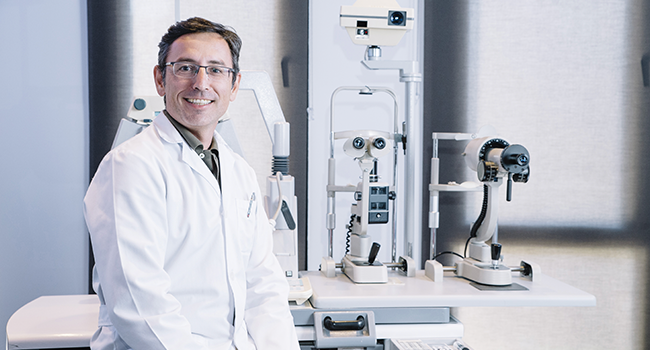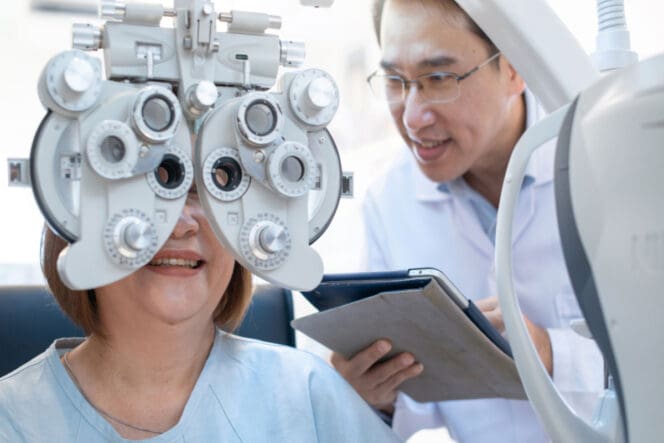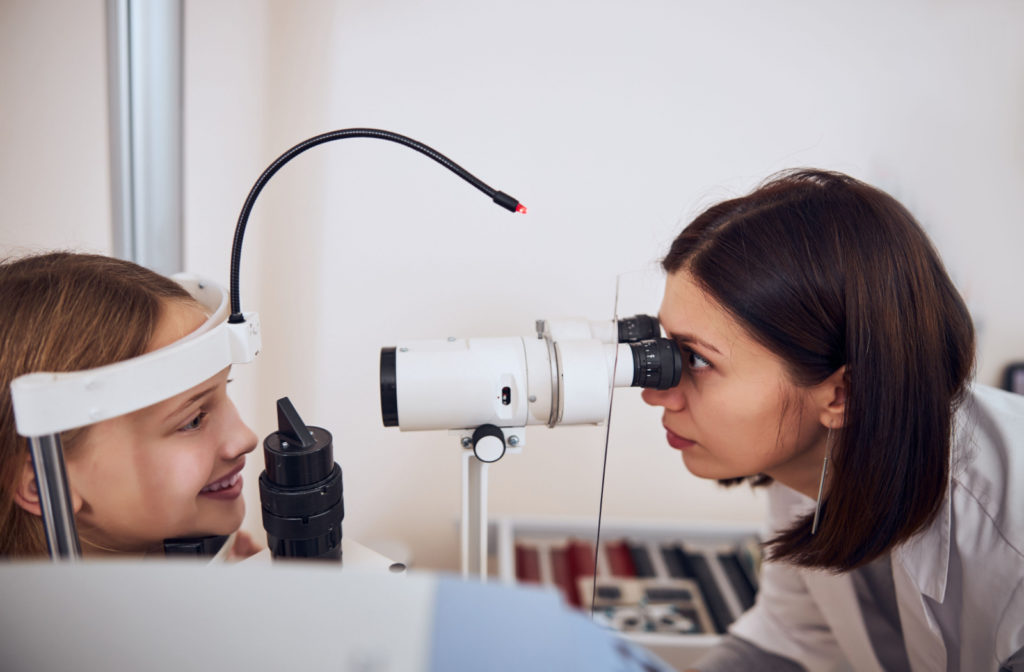Recognizing the Function of Your Eye Doctor in Maintaining Vision
Recognizing the Function of Your Eye Doctor in Maintaining Vision
Blog Article
Checking Out the most up to date Technological Innovations in Optometry and What They Mean for Eye Doctors
In the ever-evolving field of optometry, current technological advancements are improving how experts approach eye treatment. From the precision of Optical Comprehensibility Tomography to the nuanced insights offered by AI-driven analysis devices, these advancements are setting new standards in individual assessment and therapy. Teleoptometry is positioned to redefine ease of access, making certain that competence transcends geographical limitations. As these innovations penetrate the method, optometrists are faced with the difficulty of welcoming these tools to improve person end results. Yet, the concern stays: exactly how will these technical shifts redefine the roles and obligations within the occupation?
Advancements in Diagnostic Equipment
Advancing the field of optometry, technologies in analysis devices have transformed the way eye care experts evaluate and identify visual impairments and ocular problems. The past years has actually observed substantial technical developments, allowing more detailed and accurate examinations. Optical Comprehensibility Tomography (OCT), as an example, supplies high-resolution cross-sectional images of the retina, allowing for the early detection of diseases such as glaucoma and age-related macular deterioration. This non-invasive imaging strategy has actually become important in contemporary optometric method.
One more secret development is the intro of innovative corneal topography systems, which map the surface area curvature of the cornea with accuracy. These devices are specifically beneficial for suitable call lenses and identifying corneal conditions. Moreover, electronic retinal imaging has actually transformed conventional ophthalmoscopy, providing detailed, breathtaking views of the retina that facilitate complete visual exams.
The advancement of wavefront aberrometry has additionally been essential, making it possible for the evaluation of refractive mistakes with unparalleled precision (Opticore Optometry). This modern technology aids in personalizing corrective lenses and improving surgical outcomes for refractive surgical procedures. Collectively, these diagnostic developments encourage optometrists to supply remarkable individual treatment, ensuring very early treatment and tailored therapy approaches, ultimately boosting visual health results
AI in Patient Monitoring
Building on the structure of cutting-edge analysis devices, the consolidation of artificial knowledge (AI) in client management stands for a transformative jump for optometry. AI systems are progressively used to improve efficiency, precision, and customization in patient treatment.
Additionally, AI-driven platforms help with streamlined individual communications and management processes. Automated organizing, digital consultations, and individualized follow-up strategies not only enhance patient contentment yet likewise enhance time monitoring for professionals. These systems can triage individuals based on the seriousness of their conditions, making certain that those in essential need receive prompt attention.
In addition, AI boosts decision-making by offering optometrists with evidence-based referrals and treatment paths. By integrating information from electronic health records, AI devices offer insights that inform clinical choices, lowering the risk of errors and improving patient end results. As AI proceeds to advance, its duty in person management will likely increase, improving the landscape of optometric treatment.
Developments in Retinal Imaging
In the world of optometry, retinal imaging has witnessed impressive technical innovations that are boosting diagnostic abilities and patient treatment. Technologies such as Optical Comprehensibility Tomography (OCT) and fundus digital photography have actually transformed exactly how eye doctors evaluate the retina and visualize. OCT, specifically, provides high-resolution, cross-sectional pictures of the retina, enabling the thorough assessment of its layers. This ability is very useful for early discovery and monitoring of problems like glaucoma, diabetic person retinopathy, and age-related macular degeneration.
Boosted imaging modalities like OCT angiography are further refining diagnostic accuracy. This non-invasive strategy maps blood flow in the retina, offering essential insights right into vascular wellness without the need for color injections. Additionally, flexible optics modern technology is being integrated into retinal imaging systems to correct ocular aberrations, providing unmatched photo quality. Such advancements assist in the recognition of minute retinal changes that could signify disease progression.
In addition, improvements in expert system are increasing retinal imaging by allowing computerized analysis of large datasets. These systems assist eye doctors in determining patterns indicative of pathology, therefore boosting analysis precision and efficiency. Collectively, these technologies are transforming retinal imaging into a foundation of modern-day eye treatment, improving outcomes and expanding restorative opportunities.
Teleoptometry's Growing Duty
Teleoptometry is progressively coming to be a crucial component of eye care, driven by developments in digital communication and analysis tools. As optometry accepts digital transformation, teleoptometry helps with remote consultations, allowing optometrists to expand their solutions beyond conventional limits. This is specifically beneficial in underserved and country locations where access to specialized eye treatment is usually minimal. By leveraging high-resolution video conferencing and progressed retinal imaging, eye doctors can perform thorough eye exams from afar, ensuring prompt medical diagnosis and therapy.
The assimilation of artificial intelligence (AI) further improves teleoptometry, allowing the evaluation of aesthetic data and helping in the discovery of eye problems such as glaucoma and diabetic person retinopathy. AI-powered algorithms can quickly interpret complex imaging data, providing optometrists with valuable understandings that boost scientific decision-making.
Additionally, teleoptometry supports connection of treatment with smooth integration with electronic wellness documents (EHRs), permitting eye doctors to maintain thorough patient backgrounds. When seeking advice from with different practitioners., this makes certain that individuals get consistent and individualized care even.
Despite these advantages, difficulties remain, consisting of guaranteeing information protection and handling client expectations. official source Teleoptometry represents a considerable stride towards more obtainable, effective, and patient-centered eye care. As modern technology progresses, its function is positioned to broaden better.

Future Fads in Eye Treatment
A myriad of cutting-edge fads is readied to reshape the future of eye care, driven by technical improvements and the evolving needs of patients. One significant trend is the integration of expert system (AI) in diagnostics, which guarantees to enhance the accuracy and efficiency of eye exams. AI algorithms can examine large quantities of data from retinal images, possibly identifying problems like diabetic person retinopathy and glaucoma earlier than typical approaches.
In addition, customized medicine is obtaining traction in optometry, with hereditary testing educating personalized treatment plans. This technique intends to enhance individual outcomes by customizing interventions to individual hereditary profiles. Wearable modern technology, such as smart contact lenses, is likewise imminent, offering real-time tracking of intraocular stress or sugar levels, thus offering continual understandings into systemic and ocular health and wellness.
The adoption of enhanced fact (AR) and digital truth (VR) in training and client education and learning is another arising fad. These technologies use immersive experiences that can boost understanding and skills both for optometrists and people. As these trends progress, optometrists need to stay abreast of technological innovations to provide discover this advanced treatment, ensuring better individual results and complete satisfaction in the dynamic landscape of eye treatment.
Final Thought

Jointly, these diagnostic developments empower optometrists to provide remarkable person treatment, ensuring very early treatment and customized therapy techniques, ultimately improving aesthetic wellness outcomes.

As these innovations proceed to develop, optometrists have to adapt and include them right into method, ultimately maximizing operations efficiency and boosting the standard of eye care supplied to patients.
Report this page